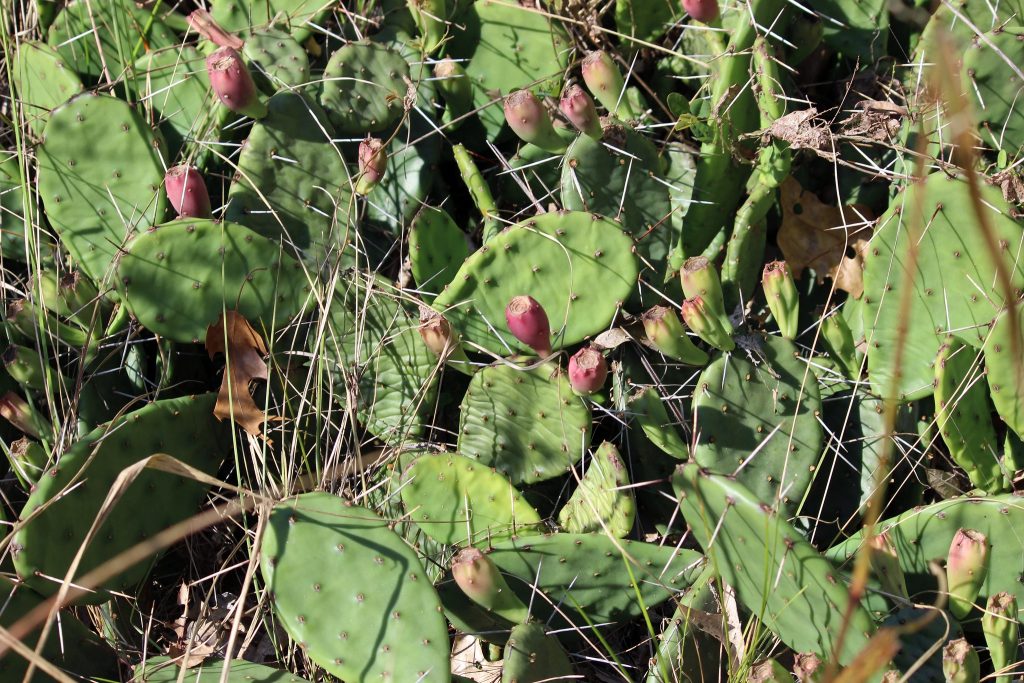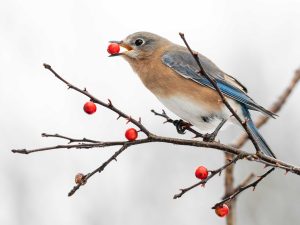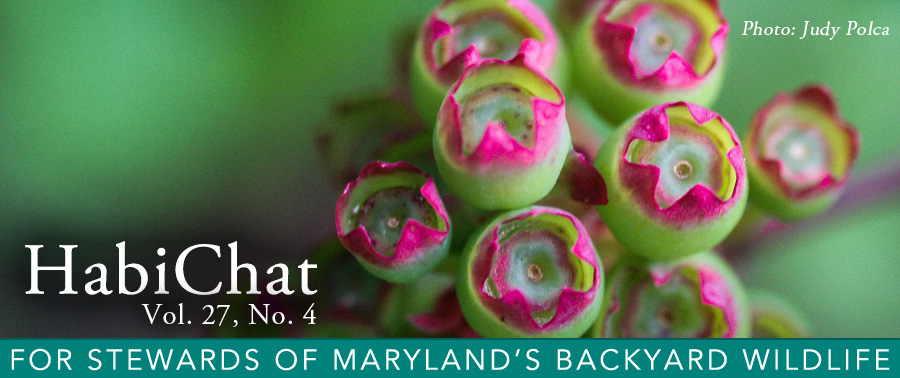Where Native Plants and Food Gardening Meet
by Sarah Witcher
“The garden suggests there might be a place where we can meet nature halfway.” ~ Michael Pollan
For gardeners with limited real estate, the decision between food gardening and using native plants can be tricky. Many of us got into gardening thanks to the immense satisfaction of planting and nurturing something we can put on our tables. There is nothing quite like the feeling of self-sufficiency and connection to the land brought by food gardening. I’ll never forget reading Animal, Vegetable, Miracle – a book by Barbara Kingsolver, describing her year-long experiment with growing and farming a majority of the food her family required on just one acre of land. That said, so many popular food plants are not native to Maryland – like carrots, broccoli, romaine lettuce, cucumber, apples, watermelon, and asparagus, for example. So, if you like planting natives to support wildlife AND eating the fruits of your gardening labor, what’s a Maryland gardener to do? The answer: plant native food crops!
The list of edible native plants is lengthy and full of numerous species that have been all but forgotten. Generations of indigenous Americans farmed, foraged, and nurtured plants that wildlife also needed. Much of the generational knowledge of how to collect and prepare native plants has been buried – but is being rediscovered. Interested in native food gardening? Here are a few species to get you started, including a low-grower, a shrub, and a tree:
The eastern prickly pear (Opuntia humifusa) is Maryland’s only cactus, but it has the largest range of any in the United States. Like many of its kind, the stem (which acts as a leaf) is photosynthetic and stores water, but unlike its southern cousins, it contains special chemicals that act like antifreeze in our colder winters. They prefer well-drained, sandy soils, and full sun. Flowers can be found on the eastern prickly pear in late summer; they are usually yellow throughout its larger range, but on individuals east of the Appalachian mountains, the center of the flower is frequently red or orange. And after flowers comes fruit! Despite the spines, both the pad, or nopal, and the fruit, called a pear, are edible on this plant when harvested and prepared correctly.
One of the great benefits of living in a climate like Maryland’s is being able to cultivate plants like the humble highbush blueberry (Vacinnium corymbosum). This shrub gets relatively tall, up to 6-12 feet, and often needs cooler temperatures for the seeds to germinate. Though they prefer moist, acidic soil, amending our existing soil profiles is usually not difficult to create a hospitable home for a blueberry bush. Their urn-shaped, white or pinkish flowers are charming and berries are a favorite among birds, so be ready to protect your harvest if you want a share!
Did you know we have a native plum? Many people have discovered paw-paws in recent years, but the American plum (Prunus americana) is still lesser known among wild food enthusiasts. This smaller, understory tree gets to about 30 feet tall and showy, white flowers in the springtime, providing pollinator food (and perhaps supporting bat prey!). The red, late summer fruit is often described as tart and is less popular to eat right off the tree, but very welcome in jams and jellies. Check out reader-submitted foraging recipes in DNR’s online Wild Maryland cookbook, including one for plums.




 1-888-373-7888
1-888-373-7888 233733
233733